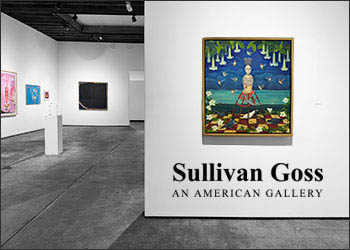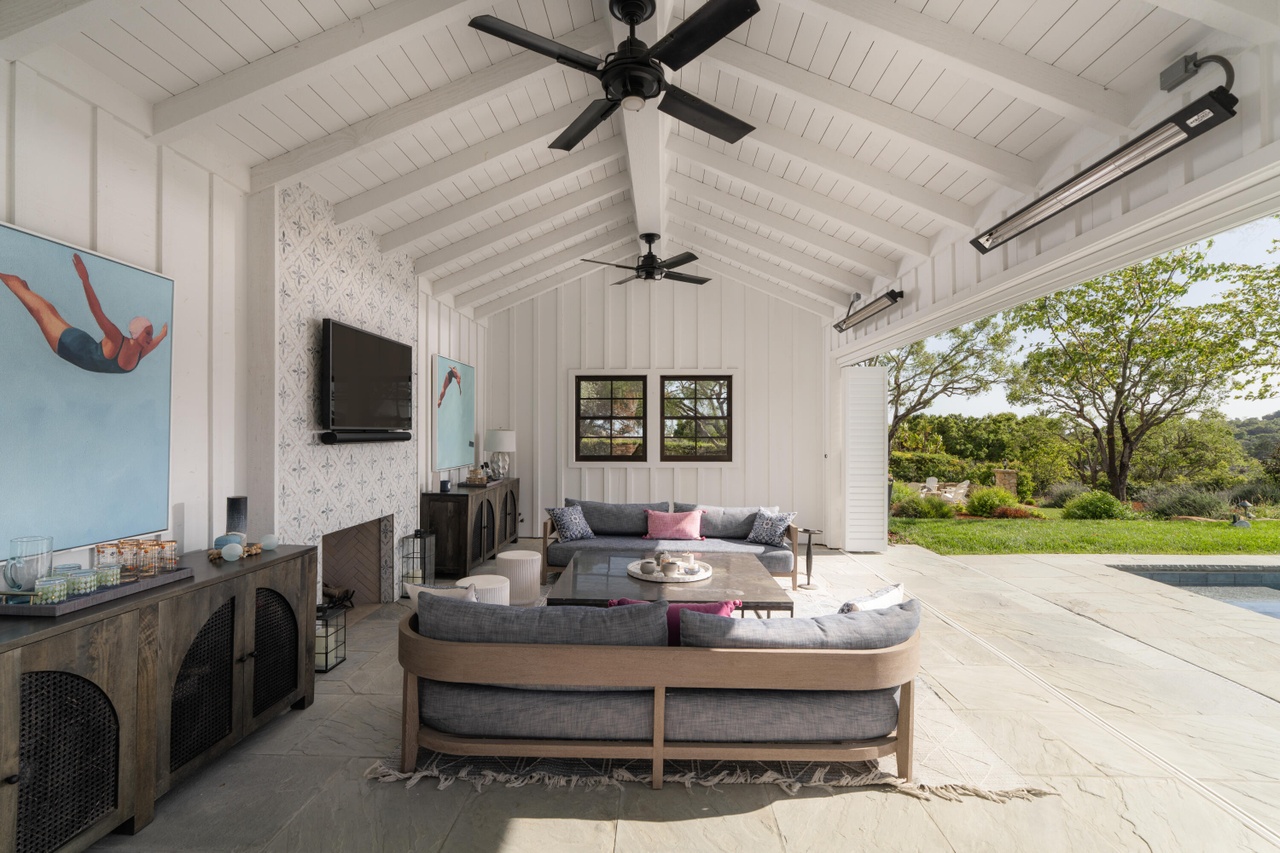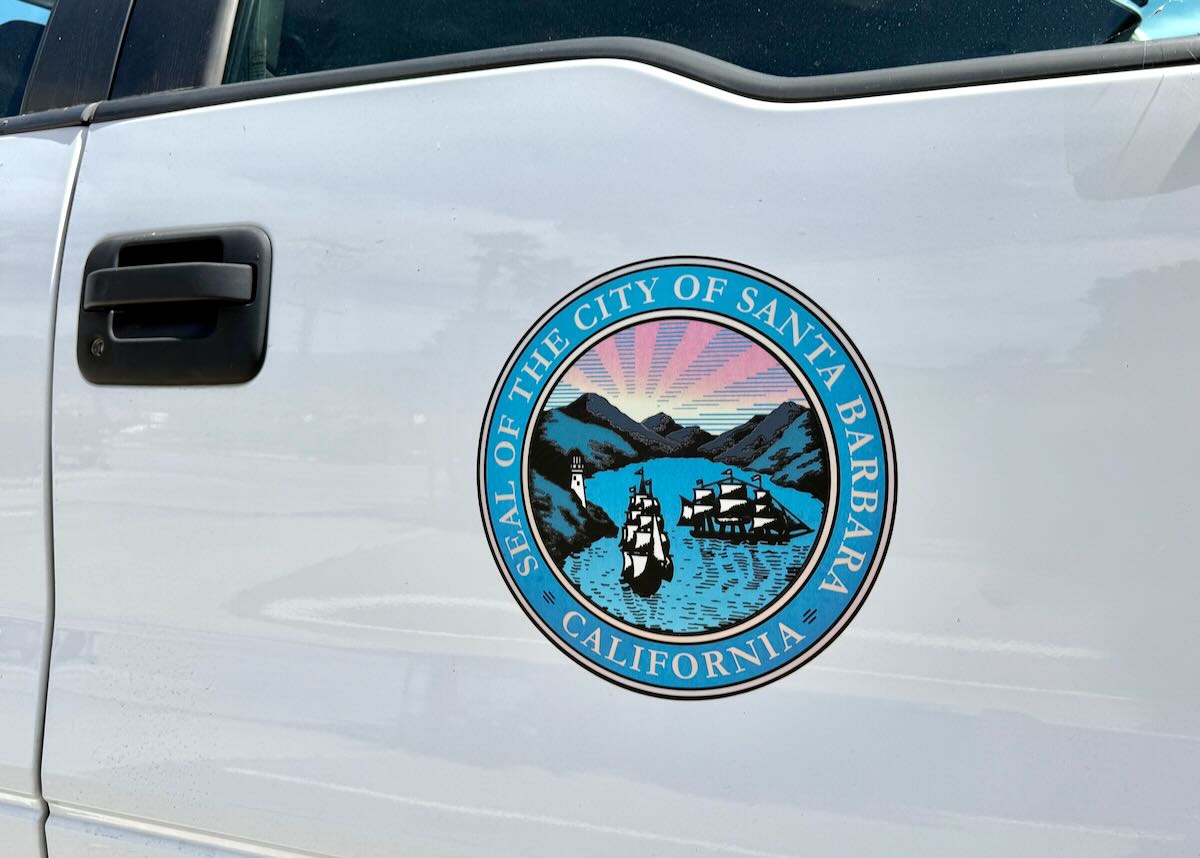What’s the history behind the seal of the City of Santa Barbara? It has two boats and a bay that doesn’t look a whole lot like Santa Barbara. —S.
I thought this would be so easy, but it wasn’t. The folks at the Gledhill Library at the Santa Barbara Historical Museum narrowed down the origin of the city’s current seal to sometime around 1900 but couldn’t uncover anything about the design. I asked everyone I could think of, hitting one brick wall after another. Was it really possible that Santa Barbara has a city seal that no one knows the meaning of?
Then the reference staff at the Santa Barbara Public Library stepped up. The following is from Library Systems Analyst Kathleen Kosiec, who was assisted by Jace Turner, Adult Education & Information Services Librarian; Lisa Neubert, Collections Librarian; and Justin Chou, Library Technician.
To research your question, we first reached out to one of our graphic designers and our architectural historian in Community Development. They both mentioned that they often receive this question but didn’t have a definitive answer. One of our City IT webmasters suggested we contact the City Clerk’s Office to see if there might be anything in the old written archives at City Hall.
After reviewing the City Charter and Municipal Code, we searched again using the term “corporate seal” instead of “city seal” to better match the language in the Charter. My colleague Jace discovered an announcement in The Independent on January 3, 1900, noting that Ordinance 332—adopting the seal—passed on January 2, 1900. Our Deputy City Clerk also managed to locate some meeting minutes referencing the seal from April 8, 1872, and looked up the January 1900 minutes for us. According to the Charter, the seal can only be changed by ordinance. Since the current ordinance language closely matches the 1900 ordinance, it appears the seal has not changed since its adoption in 1900.
As for the meaning behind the images in the seal, we haven’t been able to find much documentation explaining why the bay, ships, and rising sun were specifically chosen. However, one possible clue comes from the City’s Coat of Arms, which appears in the tympanum at Central Library:
From the library website: “In the center is featured the Coat of Arms for the City of Santa Barbara, which depicts two Spanish ships sailing the ocean. The rolling green hills represent the Santa Ynez mountain range.”
My colleague Justin reached out to the Santa Barbara Maritime Museum executive director Greg Gorga. These comments are mainly his opinion, but he gave us permission to share: “If I recall the City seal correctly, it is really not an accurate representation of Santa Barbara. I do not recognize the coastline that is displayed, the ships are hard to pinpoint, and not what the earliest Spanish ships would have looked like (e.g. the Cabrillo ship San Salvador at the Maritime Museum of San Diego), and the lighthouse tower is not what our Santa Barbara Lighthouse looked like. (We have a model of that lighthouse on display here.) I always believe the lighthouse should be the one that was on the Mesa, and the ships depicted should have been a Chumash Tomol and the San Salvador.”
In conclusion, while we can’t say for certain why these particular images were selected or exactly when they first appeared, it seems likely that the current seal has been in use since 1900. The ships are thought to represent Spanish ships sailing the Pacific, with the Santa Ynez Mountains in the background—an enduring image of Santa Barbara’s coastal location and history.
A big thanks to the SBPL! And if anyone out there has further info, please chime in.
Got a question you’d like investigated? Email sitelinesb@gmail.com or text 917-209-6473.
················
Previous Burning Questions:
••• Butterfly Beach steps, green power lines, SBAG license plates, and more
••• What’s this pole with a flashing blue light?
••• What are these sculptures on the Riviera?
↓↓↓ What’s the origin story of this fence on Hot Springs Road?
••• What’s the housing development under construction next to the polo fields?
••• Why is part of this West Beach mosaic covered in concrete?
••• What was the Weeping Willow Inn?
••• What does the “S” on certain chimneys stand for?
••• What’s the status of the decommissioning of Rincon Island?
••• What happened to the gas flame on Highway 101?
••• What do we know about the proposed apartment complex at 1 Hot Springs Road?
••• What’s the history of this tower on Ortega Ridge?
••• What’s up with these sculptures on a hillside in Summerland?
••• Is there a master plan for the new walking paths in Montecito?
••• Why are the Thousand Steps still wet?
••• What’s happening with Sola Street?
••• Why are trees being cut down above the San Ysidro Ranch?
••• Why is this lot on Milpas Street still vacant?
••• Where else do cruise ships that visit here go?
••• What is this large memorial in Ennisbrook?
••• What’s the large building under construction next to Highway 101?
••• Who bought the former St. Mary’s seminary—and why?
••• What will happen to the SBPD building when the new building is completed?
••• How does the city decide to mark bike lanes?
••• What’s the story with this house on W. Cota Street?
••• What are those little houses on Santa Barbara Street?
••• Is the Music Academy of the West adding pedestrian gates?
••• Why does the Coast Village Road median look so bad?
••• What’s the point of this light pole near the freeway?
••• Why are the city’s parking lots scanning license plates?
••• What’s inside Paseo Nuevo’s State Street tower?
••• What’s the point of these markings on Laguna Street?
••• Why is there a giant red shoe off Highway 101?
••• Are we no longer allowed on the SBHS baseball field?
••• What does “SBTP” on this post mean?
••• What’s up with the “no e-bike” signs on local trails?
••• Why is Franceschi House in a holding pattern?
••• What’s happening with this derelict house in Summerland?
••• Why is there wood on some power lines?
••• Can you explain how sundowner winds work?
••• Why is there a pressure cooker attached to this utility pole?
••• What’s this concrete ramp thing on East Beach?
••• Why does “USA” get written on the street?
••• What are those poles in the ocean near the Ritz-Carlton Bacara?
••• Are people really allowed to set fires in the middle of Montecito?
••• What’s the story with the half-finished lot next to the Montecito Country Mart?
Sign up for the Siteline email newsletter and you’ll never miss a post.



















Much appreciation to the library staff for their deep dive into the archives for this. Love the close up photos of the tympanum. It’s stunning!
This is a story unto itself, an “outsider” researching the meaning behind the seal to help educate the locals who have no clue, not even the Historical museum. The thing about SB is, once it’s a tradition, no one asks why or where it came from, or if it should continue. Great work Erik!
Erik may be a relative “newcomer”, but he’s definitely an “insider” when it comes to what’s happening in Santa Barbara.
I suspect the two ships represent the Princesa and the Favorita, which anchored outside the old shallow bay at Goleta in 1782 (the bay was largely filled in during the Great Flood of 1862 and is now the location of the Santa Barbara Airport): https://www.militarymuseum.org/PSB.html
VIVA GOLETA
Such a great question and great read.
Our librarians are amazing people — and excellent for sleuthing many questions. I wish we’d all utilize them more.
Kate – The Princesa and Favorita in the shallow bay in Goleta makes a TON of sense. Still a bit of a mystery about that lighthouse, but the military museum link was also a great find.
Bravo!
This is awesome! We are in transition to FT life in SB and have wondered about this (and many other interesting things) as part of our activities to understand our new community. Thanks Erik & librarians!
and have wondered about this (and many other interesting things) as part of our activities to understand our new community. Thanks Erik & librarians!
I guess I’m the only one who thought the Santa Barbara seal story would be about an oceanic animal. Appreciated it and the library love anyway.
I recall reading that the slough near what is now UCSB was once navigable and had an island even before it silted up.
Might, MIGHT be the area that was depicted.
Pretty interesting: https://goletahistory.com/the-goleta-slough/